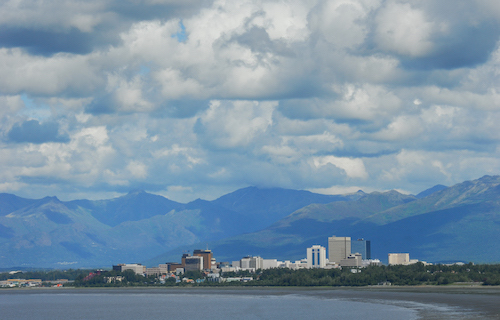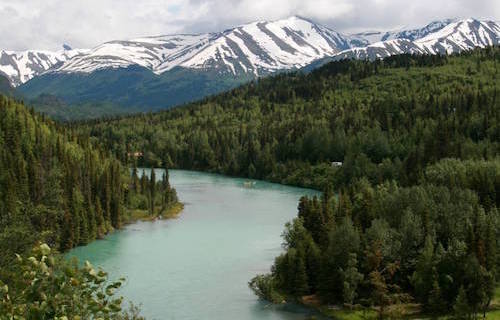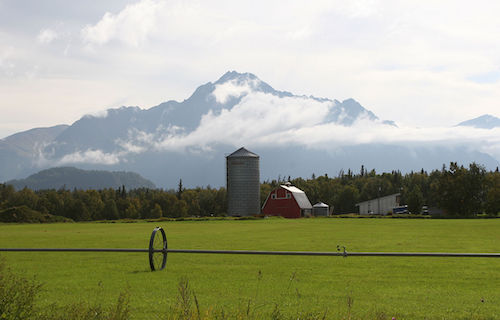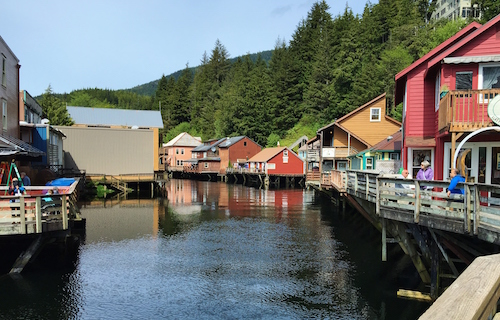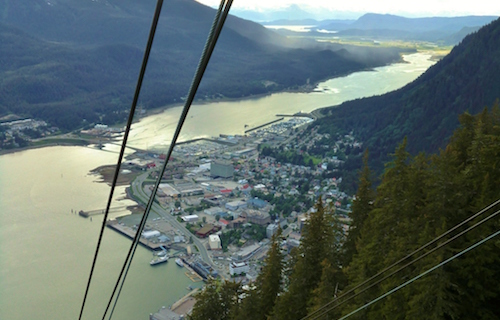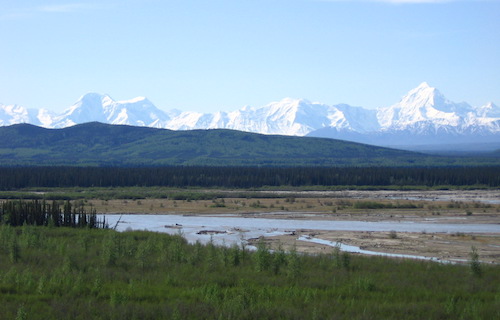Murkowski Highlights Opportunities, Challenges with Interior Budget Request
Washington, DC – Yesterday, U.S. Senator Lisa Murkowski (R-AK), Chair of the Senate Appropriations Subcommittee on Interior, Environment, and Related Agencies, hosted the Secretary of the Interior in subcommittee to discuss the Department’s budget request. The Senator reinforced her appreciation for the administration’s approach to resource development in Alaska, while also addressing staffing concerns, public land sales, and other avenues of potential for the department.
Watch the Senator’s opening statement here.
Read the Senator’s full opening statement below.
FULL TRANSCRIPT
Senator Murkowski: Good to have you here to discuss the President's Fiscal Year 2026 Budget Request for the Department of the Interior. I'm pleased to have the opportunity today to talk about the important work that the Department does, including its leading role in supporting America's energy agenda, empowering Indian country and Tribal nations, providing recreational opportunities to tens of millions of Americans, and generating billions of dollars in economic output.
It's been a real pleasure, I have appreciated the meetings that we've had, the conversations that we've had by phone, and it's been great to meet the various Assistant Secretary nominees from the Department. I've enjoyed our conversations there. I'm impressed by their understanding of the issues that they focus on, and their commitment to public service.
You're building out quite the team. It was great to be able to talk to Kate MacGregor. She has a little bit of history with the Department, and comes with a lot of knowledge and understanding, certainly on Alaska-related issues, so we were glad to get her confirmed and to work as well as some of the other nominees. As the Chairman of the Indian Affairs Committee, we're anxious to have a nominee for the [Assistant Secretary for Indian Affairs] as well.
So, I want to thank you, I want to thank President Trump for recognizing Alaska's amazing natural resource potential. This was very significant in the day-one executive order: everything from the Ambler Road to the NPR-A, to non-wilderness Coastal Plain, Alaska
LNG. There's been very swift, very early, and decisive action in this space. It’s welcome both here in Washington, DC, and certainly in my state. So, I'm looking forward to working with you to further facilitate the development of Alaska's resources.
I know you are looking forward to going to Alaska in just a couple weeks. Hopefully, it's going to be a great trip, lots of good information, good feedback, and good weather. I'm hopeful that Denali will be out in all of its majesty and splendor and you'll be reminded why Alaskans prefer the Koyukon-Athabascan name, “Denali,” meaning ‘the Great One.’
The President and you have set out an ambitious agenda, particularly with respect to the focus on energy and economic development. I’m very supportive of this endeavor, and know that I want to be your partner in achieving so many of the goals.
Beyond resource development, the Department of the Interior can be an economic force for good in many different ways. One of the most important economic drivers that we see up in Alaska, aside from the resource end of things, within the Department is the National Parks System. The National Parks in the home states of the members on this subcommittee generate a collective $7.4 billion of economic output annually. That's more than the gross domestic product of 40 different countries. But it's not just the economic output that makes parks so important, it's the experiences of traveling to parks, seeing the wildlife, having an adventure that creates a lifetime of memories. And, we've had discussions about some of your early years and the significance of that.
Back home in Alaska, we've already had about 150,000 people come through on cruise ships this year. That might not surprise other people, but this is early for us. We estimate a total of 1.65 million visitors for the tourism season – that's about double the population of our state. So, when we see a skinny budget that proposes to cut $1.2 billion or 35% from the Park Service, it's hard to square it with the claims that DOI is focused on fostering the American economy, again recognizing that our economy is more than just our natural resource development.
Another area of concern that I will address in my questions within the National Park Service budget proposal is the concept of turning over management of National Parks to the states. I'm trying to figure out exactly how this would work, and I'm kind of thinking it's like me putting my kids in charge of the upkeep for the house that I own. In some instances, it might make good sense, but as a wholesale best practice I worry about how that might impact the parks or our people. So, should this concept be included in the full budget request, I'd hope that we have a really thorough conversation with you to better understand the justification for the proposal.
I am concerned about what the skinny budget proposes for the BIA and the BIE. Cutting nearly $1 billion from Indian Affairs would hurt the federal government's ability to meet its trust responsibility to Native people. In some of our conversations, I've shared some of the areas where I think the Department has failed Indian Country, and this is in areas like probate, where we have an extraordinary backlog, public safety and justice, missing and murdered indigenous people, as well as the education of Native American children.
While I appreciate that the skinny budget alleges that proposed cuts would enable Tribes to focus on law enforcement, I'm not sure how reducing BIA law enforcement funding by $107 million is treating the program as a core priority of Tribes. I know, because I hear Tribes have been requesting more support for this program to address a serious lack of policing, so I worry that cuts of this magnitude can't be made up for by directing Tribes to apply for grants at DOJ as the skinny budget suggests.
I want to end my opening comments this morning by talking about what I consider to be, and I know that you put equal priority to, and that's the men and women of the Department. The people who actually make things happen.
We've talked about a lot of good ideas for using new systems, IT systems, artificial intelligence, how we can make the Department more efficient. These are good goals, worthy goals, and I hope to see that detailed more in the budget. But I think we know when we're talking about management of our public lands, if you don't have the necessary staff, whether out in the field or in the headquarters, all the investments that we want to make become less efficient.
When I think about the Executive Order as it relates specifically to Alaska, we've got some good things that we want to do up north when it comes to resource development, but scientific and ecological assessments that are provided by USGS are relied upon by not just federal land management agencies, but by the industry as well. USGS science helps avoid polar bear dens, identify permafrost, map caribou migration patterns. So, when we see cuts to USGS, but also BLM, BOEM, BSSE, and OSMRE, it causes me to wonder, are we going to be able to accomplish what we're all seeking to accomplish together?
I think it's important also that people have expertise and knowledge about the places that they serve. I had this conversation with folks in the Forest Service. You just can't take somebody who maybe comes from Indianapolis, a good Forest Service person, but you put them out at the Mendenhall Glacier Visitors Center where their job is bear management and they don't have a clue about bear management.
We want to make sure that we're making good and smart decisions. I know you're probably going to get a lot of questions today about staffing cuts, and how that is going to impact the operations of the Department not just here in Washington, but around the country. I do wish that the Acting Assistant Secretary for Policy, Management, and Budget, Mr. Hassan, [was] here today to answer some of these questions because he seems to be in charge of making a lot of the decisions about the staffing and the [reorganization]. I'm hoping that he is going to be in a position to be more responsive to my staff about some of the questions that we have raised. But ultimately, and you know, you've been a governor you know the buck stops with you. He can be responsible for certain things, but ultimately it is you that is accountable.
So, getting the answers to questions about the reorganizations, the impacts of RIFs, how the Department will operate National Parks, protect reserves, and implement the President's energy agenda. Getting this channel of communication going back and forth in a good and a constructive way, I think is going to be important. But, my bottom line to you this morning is [that] I'm I pleased with your nomination, I'm excited that you are there at the Department.
I'm really excited about the shift that we're seeing in Alaska where the Department has really gone from being a problem to being a partner in so many different areas. So, [I’m] looking forward to what we're going to be able to do together.
###

